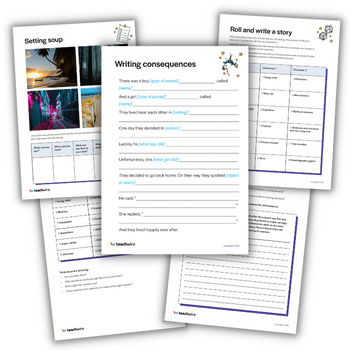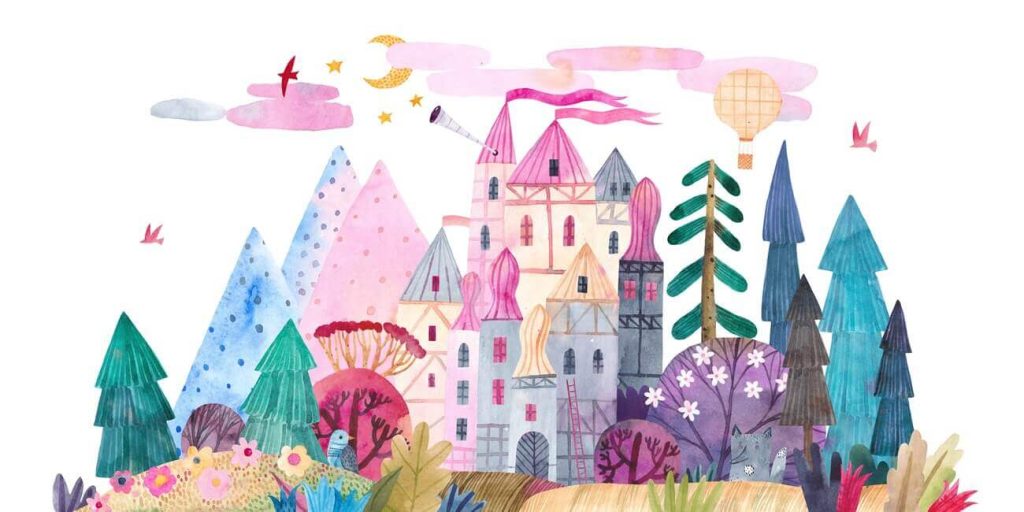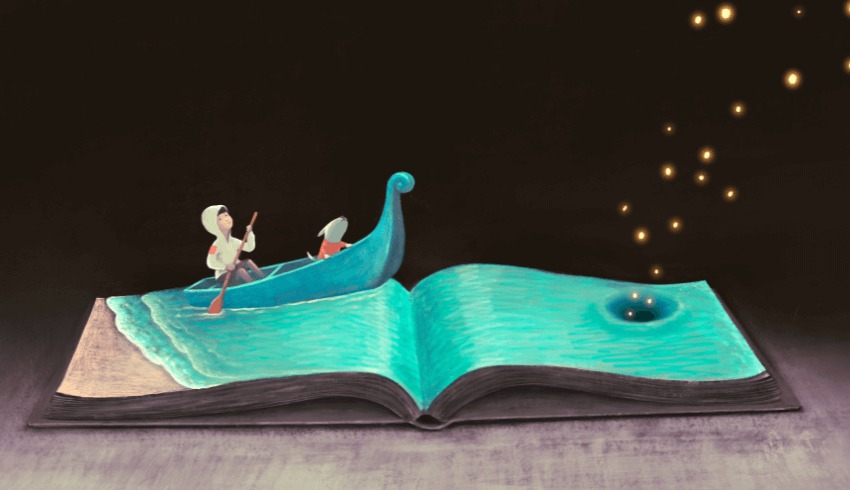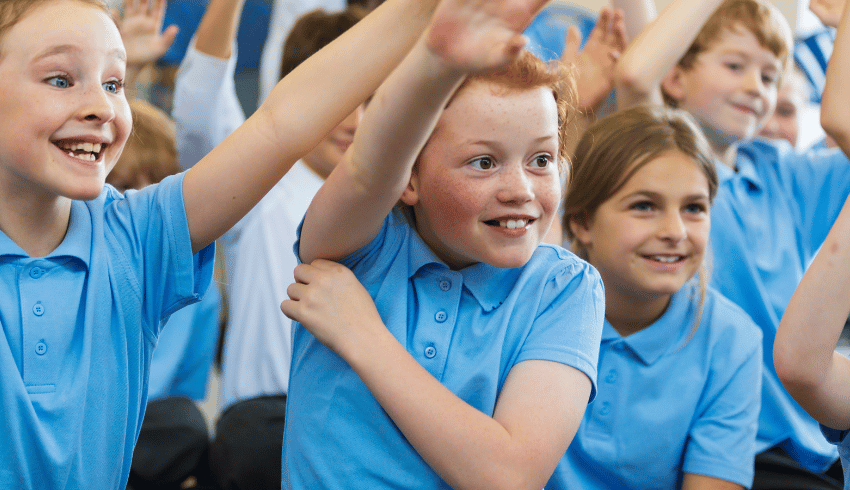Creative writing – How to nurture your young authors

Get pupils into the scribbling spirit with these ideas for the classroom and after-school clubs…

- by Teachwire
- Classroom expertise and free resources for teachers

Get children excited about creative writing and use it to get to know your students better with this advice from teachers and education experts…
Use creative writing to get to know your pupils

Want to learn more about your class? Just let them write, says teacher Simon Hunt…
It’s remarkable what you can discover as a teacher when children have the freedom to express themselves in their writing.
At the beginning of term, I use creative writing to understand where a child is academically and to help me get to know all the children in my class.
Why not just give them a test, you ask? Well, you can learn a surprising amount about a child from a piece of their creative writing.
Interests and passions
The choice of topics and themes in their writing can unveil children’s interests and passions, which is an incredibly valuable thing to know. Whether it’s street dance, football or dogs, you can use this knowledge to help spark their interest in maths, science, or any other subject by tailoring examples to suit them.
Emotional expression
Creative writing also provides an avenue for children to express their emotions and thoughts, which will allow you to understand more about their feelings and concerns. It can unveil a child’s depth of insight and emotional intelligence that they may be hesitant to express verbally. This will really help you choose the right support for them through the school year.
Confidence and oracy
Reading aloud is an important part of writing stories, as it gives children the opportunity to practise their oracy skills: pitch, tone, and intonation. And, vitally, hearing them read out loud will allow you to baseline their reading fluency. Presenting their writing to an audience can be very intimidating though, so should be handled sensitively.
Some children naturally have quieter voices and may avoid volunteering to read aloud, as they are aware that not everyone can hear them. In class, we have a pass-around microphone that children use when reading.
The microphone is connected to a speaker, meaning that everyone can hear them. The simple act of holding the microphone can significantly impact a child’s focus when reading aloud – often serving as a sort of comfort blanket, boosting their confidence.
Ultimately, the important thing to note is that stories are meant to be read and heard, and anything we can do to encourage that nurtures children’s literary and communication skills.
Imagination and creativity
Creative writing reveals a child’s imaginative abilities, giving insights into their capacity for original thinking and storytelling. It can be surprising to see the children that excel at this and can help to highlight an aspect of a child’s personality that might otherwise not have come to light until later in the term.
How to make it work
If we want children to be excited about creative writing, we have to be too, so think about how you introduce the lesson.
I often begin by telling my new class about how I felt about writing as a child. I loved reading books, but I struggled at school with spelling and grammar (in fact I still do).
Sharing how creative writing helped me overcome my fear of writing allows me to explain how I realised that what was important was the imagination and creativity I could bring to my story.
As a published children’s author, I show them the books I’ve written and connect them back to what I learnt at school. I hope this helps them to overcome their worries about spelling and grammar – I’ve found post pandemic that more children feel anxious about ‘getting things wrong’.
Of course SPAG is still incredibly important but in creative writing I really want them to tell me a good story.
There are so many ways to understand the children in your class and what makes them tick and, as teachers, we’re attuned to gathering this information from day one. However, I think creative writing is one of the best because it gives us the basics but also tells us so much more about the child.
Simon Hunt is a Year 3 & 4 teacher at an inclusive school in Greater Manchester and education consultant for 500 Words 2023, the UK’s most successful children’s story writing competition hosted on BBC Teach. He also advises on 500 Words Live Lesson, which you can watch online.
How to run your own creative writing club

Would you rather fly, or be invisible? Explore endless impossibilities and get pupils into the scribbling spirit with these ideas…
If you could wish for one thing, knowing that it would definitely come true, what would it be? A million pounds? To fly? Talk to animals? Live in a tree house? Travel the world at the click of a finger?
I’ve asked this question hundreds of times to thousands of pupils, and their answers are always imaginative, normally well thought-out, and quite often, impossible.
I then follow it up with the question, “What if you could experience that thing right here, right now?” Cue eyes widening, ears pricking and backs straightening. “All you need is… a pencil.”
Creative writing club
Before becoming an author, I ran creative writing clubs in 30 schools a week for almost a decade. I hired over 100 tutors, won some awards, teamed up with publishers to arrange author events, and even had requests from teachers in Europe, Dubai and Australia asking to launch a writing club in their schools.
There were long waiting lists in almost every setting, and teachers, parents and librarians would ask on a weekly basis, “How have you turned that reluctant reader/writer into someone that actually wants to do more writing after school?”
Just another writer
The secret? First and foremost, I planned workshops that were FUN. I knew if I enjoyed running them, pupils would enjoy taking part.
I was just another writer in the room who talked about the books I was reading, collaborated on ideas, and asked for feedback on stories in the same way they asked me.
At this point I wasn’t a published author – just someone that loved to invent characters and write about fantastical, magical worlds.
I wrote alongside the students, making mistakes, scribbling over anything I didn’t like, and asking for help whenever I got stuck.
Everyone knew this was just ‘rough’ work. There was no pressure. No marking. No tests. And we didn’t have to share our ideas if we didn’t want to.
Jumping-off points
I genuinely looked forward to every single workshop I ran, and I know the students felt the same when they came racing into the classroom and didn’t want to leave at the end (yes, even the ones who ‘hated’ writing to begin with!).
Of course, I couldn’t rely on pupils simply coming up with new ideas each week for enjoyment. I had to provide them with inspiration, jumping-off points, and exciting writing hooks, too.
For this, I turned to the experts – children’s authors. I chose five ‘Authors of the Term’ that I knew would enthuse and inspire the students, and designed workshops around their books.
This was always a fun part of the process – I looked for books that had wide appeal, simple concepts, and an excitable element that made my inner child say ‘oooh!’. Here are a few examples . . .
Writing for pleasure
I used Abi Elphinstone’s Rumblestar to write fast-paced adventure stories. We plotted our adventures on maps, devised the main action in ‘cloud planners’, and focused on exciting ‘world-crossing moments’ to start our stories.
At Halloween, I chose books like Guy Bass’ Stitch Head and Joseph Coelho’s Zombierella, and ended each workshop with a spooky storytelling session where we turned off the lights, closed the blinds, and sat on the floor as if we were gathered around a campfire!
The most successful workshops were the simplest. I used L.D. Lapinski’s Strangeworlds series and copied what happened to the protagonist when she jumped inside a suitcase and travelled to another world.
Pupils planned their new setting, focused on the five senses, and described the first thing they noticed when they arrived.
Their stories were thrilling, fast-paced, hugely descriptive, and completely individual, because they had the freedom to take their ideas in any direction they chose.
I normally scheduled two sessions around each book – the first session involved planning and starting stories (or poems / diary entries / letters, etc), and the second session involved extending, improving, or continuing them.
I also added one ‘paint a picture’ session (using images for inspiration) and ‘free writing’ at the end of each term to give pupils a chance to finish their favourite piece of work.
Remember, if you want to boost writing for pleasure, pupils should know that they can write about anything. Nothing is off limits, impossible or ‘wrong’.
And if you’re not sure how to start your first session, why not ask your pupils that if there was one thing they could wish for, knowing that it would definitely come true… what would it be?
Creative writing activities
1) Distraction!
Beware: pupils love this game so much, they might ask to play it every week! The idea is simple. Children write for 10 minutes, in silence, and if they speak / laugh / stop writing for an extended period of time, they get a ‘strike’.
If a table gets three strikes, they risk not being allowed to read their work out. The twist? It’s your job to distract them!
Shake tables and shout ‘EARTHQUAAAAKE!’, steal their pens, use rulers as drumsticks, play songs they’ll want to sing along to, bust out the YMCA and get caught by a bemused headteacher.
Between the giggling and dancing in their seats, pupils will write so much in these 10 minutes, and it’s a great way to get them writing without overthinking.
2) Where am I?
Give students a setting (e.g. a library / the moon / horse stables / a rocket ship) and challenge them to describe it without saying where it is.
They should focus on the five senses. They must give at least three clues before the class can guess where it is, and the person who guesses correctly gets the next go.
The winner is the person who gets the most correct answers or the person that comes up with your favourite description.
3) Five-minute challenge
Tell pupils that most adults can write two lines in one minute, and then challenge them to write 10 lines in five!
Give constant time reminders, walk around the room shouting out ideas or words of encouragement, and watch their competitiveness soar.
This is a great game to play if, like me, you spend most of the lesson talking about books and story ideas, and realise there’s not much writing time left!
4) One-word game
This game is a great way to warm up imaginations at the start of a workshop. Ask pupils to stand behind their chairs and give them an opening line such as, ‘I was walking through the haunted castle when . . .’.
Walk (actually, it’s more of a run) around the room, pointing at each pupil in turn, and asking them to add one word to the story.
It must make sense and they have three seconds to answer. If they can’t think of a word, if it doesn’t make sense, or if they take too long, they are out and must sit down.
The winner is the last person standing. Note: when they get really good, try introducing a one-second hesitation rule – it’s hilarious!
5) What’s your problem?
Remind students that every story needs a problem to make it exciting.
Then ask them to stand behind their chairs and each give one problem like, ‘aliens invaded Earth’ or ‘I broke a fingernail’.
Problems can be big or small, but they must give an answer in three seconds, and they can’t repeat anything that’s already been said. The winner is the last person standing.
Mel Taylor-Bessent is the author of The Christmas Carrolls and the director of the award-winning educational website, Authorfy. See more of Mel’s work at meltaylorbessent.com. Browse more creative writing prompts.
Creative writing Year 6 project

Combine twisting tongues and paperback publishing to produce an exciting writing project that allows pupils to make their very own book…
Have you ever tried to get your class excited about a writing exercise, only for them to pipe up with “But what’s the point?”.
We’ve all been there, and it can be incredibly frustrating when you don’t have an answer lined up.
Well, with this project, the outcome is both evident and impressive!
As part of a workshop, we decided to show children the amazing process of publishing, while adding in some humour, and – of course – essential literacy skills…
We visited Helen and her Y6 class for a morning, and explained to the children that we would do some writing that would lead to the publication of their very own paperback book.
We’d act as their agents, editors and publisher; they would have full control over all other aspects of the process.
The class settled on tongue twisters as our subject, and began by inviting children to try out some old favourites.
After much twisting of tongues and accompanying laughter, we showed the children probably the best-known English example: the one featuring Peter Piper. Most knew the first line but didn’t know there were three more:
Peter Piper picked a peck of pickled pepper.
A peck of pickled peppers Peter Piper picked.
If Peter Piper picked a peck of pickled peppers,
Where’s the peck of pickled peppers Peter Piper picked?
We challenged the class to compose 26 brand-new twisters, each following the alliteration pattern of that original but finding their own vocabulary.
Dictionary skills
Helen organised the class into pairs or threes, and each group was given two letters of the alphabet to work on, ensuring no group got two of the trickier letters.
Armed with dictionaries, the children got to work, and by breaktime had produced some impressively inventive twisters.
Here’s an example, cleverly coping with one particularly difficult letter:
Xavier Xmas x-rayed an extra-terrestrial xylophone.
An extra-terrestrial xylophone Xavier Xmas x-rayed.
If Xavier Xmas x-rayed an extra-terrestrial xylophone,
Where’s the extra-terrestrial xylophone Xavier Xmas x-rayed?
Although writing was the focus of the project, there were clear opportunities throughout for lots of worthwhile speaking and listening, too.
The pupils engaged in planning their tongue-twisters, and shared drafts in small groups.
Next, the groups came together to swap ideas and ask for opinions, and, finally, children read aloud their contributions and again asked for feedback.
Reading comprehension KS2
As the children worked, they giggled a lot, but the seriousness and concentration they brought to the task was impressive throughout.
The talk was easily focused, because, in National Curriculum terms, pupils were ‘discussing writing similar to that which they [were] planning to write’.
There was also a clear need for writers to read the original text very carefully, which was built into their discussion and planning for their own verses.
This focus was nicely balanced by the eager and sustained use of dictionaries and the need for creativity in their word-hunting, showing their ‘enjoyment and understanding of language, especially vocabulary’.
Throughout, the process was always collaborative; writers understood they were working towards a shared, larger whole, and to tight deadlines, with a clear need for some ‘speedy writing’!
Once drafts were complete, all the children had to do some editing, and lots of proofreading.
Paperback publishing
After breaktime, we explained that once we were gone, they, the writers, would be in charge. All 26 twisters must be typed up and emailed to us by the end of the week. For the book, they must write a blurb and an introduction, and choose a title.
We explained how easy and low-cost it is to self-publish; the only cost came with the ordering of actual copies and so they must settle on a price per copy and crucially decide how many they would like to order (sneaking in a bit of economics!).
The children listened with real attention to all this and asked a good number of questions after, showing a remarkably mature commitment to the task.
Helen reported that the children very much liked the novel approach to writing.
They enjoyed their shared creativity and loved being entrepreneurs, relishing the involvement and control they had over the tasks, the decision-making, and the purpose.
For that short time, they had turned their classroom into a genuine publishing house and experienced purposeful writing for a real-world outcome – we won’t soon forget the looks on their faces when they saw their books for the first time.
David Horner was a writer-in-schools for over twenty years. Mike Jackson is a former primary school headteacher.










